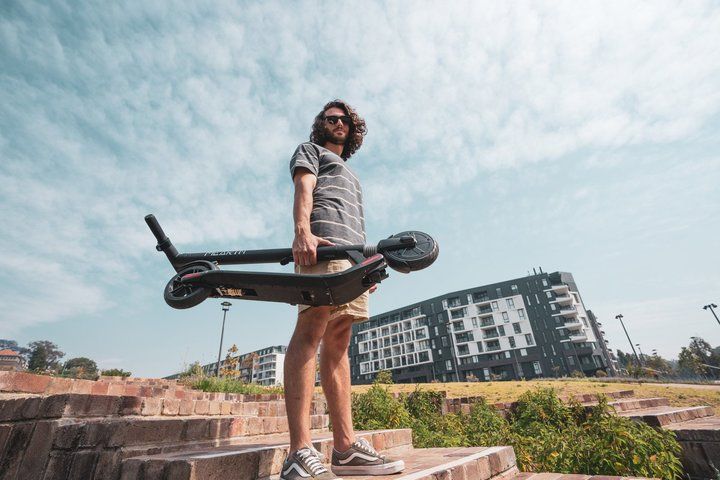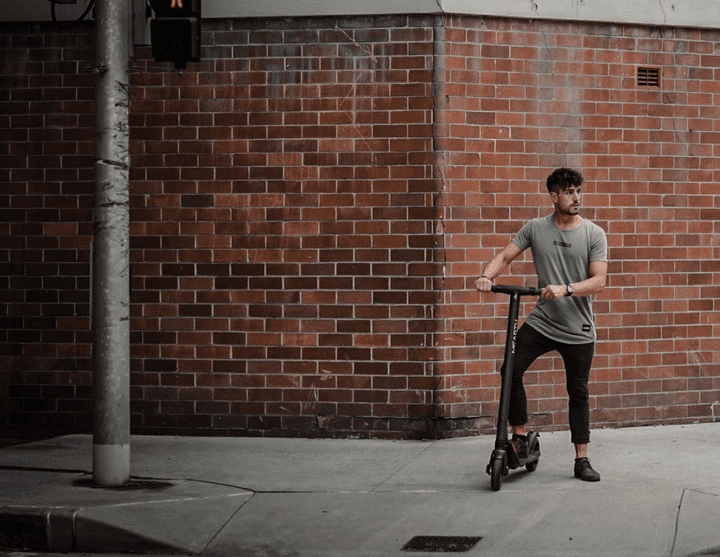
You can easily rent an electric scooter from any of the scooter-sharing companies in your city, but buying your own electric scooter is more cost-efficient in the long run. It’s also safer – shareable electric scooters are used several times in a day, which makes its lifespan shorter and more likely to break.
There is a wide variety of electric scooters in the market of all price points, ranging from budget scooters that can sell for as low as $400, to high-performance scooters that can cost up to $6000. For a commuter, what you will need is a durable portable personal vehicle that has enough range that can serve as a last-mile solution.
To help you narrow down your list and find the right electric scooter, here are the features you need to prioritize:
Range
The real-life range of an electric scooter is affected by different factors – speed, weight, battery, and terrain.
Your weight and the road conditions affect how fast you can go. Your speed determines how long you can run until your battery runs out. When you’re commuting in the city, road surfaces aren’t consistently flat and smooth. Hills and steep inclines demand more power, which affects your electric scooter’s battery life.
To make sure that you have the right range, it’s best to stay below the maximum weight capacity, have the right power output, and determine the distance you need to cover.
- If you need a durable electric scooter for commuting, mid-range scooters, which already gives you up to 30 km, will work for you well enough. Electric scooters made in Australia typically have a maximum weight capacity of 120 kg.
- If you have relatively flat roads and the occasional small hill in your commute, a 250-watt motor can manage. If you have roads with mixed conditions and a 15-degree slope to get over, a 500-watt motor is reliable. If you need to go off-road, you would need at least 1000 watts and a dual motor.
- For your ideal range, add 30% – 50% on top of the total kilometers of your commute to get a benchmark of what you’ll require. If your commute needs 16 km, go for a minimum of 25 km as your ideal range.
Portability
Electric scooters are foldable and compact, which makes them portable for everyday use. You can tuck it away somewhere safe in your house or office without the need for a parking space. You can also use it for quick errands and avoid traffic.
The trade-off is that bigger batteries will add weight to your electric scooter. If you need to climb up a flight of stairs to your office or apartment, you’ll need a lightweight scooter. There are models that also let you fold the handles which makes it more compact.
Consider purchasing the heaviest electric scooter you can comfortably carry, so you don’t have to compromise too much on features.
Safety
Electric scooters have a set of safety features but vary depending on the model. Four things to consider:
Tires – air-filled or pneumatic tires provide a more comfortable ride because they dampen the impact from the bumps on the road and uneven surfaces. However, they can be punctured, so you may have to replace them in the future. You don’t have to worry about this with solid tires, but they are slippery on wet roads.
Brakes – there are different varieties of electric scooter brakes: motor, disc, regenerative, and foot brake. All are reliable on paper but can perform differently in real life. The best brake will depend on your speed and its response while riding, so it’s best to test drive and find out if it’s enough for you.
Accessories – the light on the rear fender is not visible to cars on the road, so it’s advisable to wear a helmet or backpack with LED lights. Balancing on an electric scooter can be challenging so make sure that the deck provides a good grip between your shoes and the scooter.
Speed – the safest speed on an electric scooter when commuting in the city is 14-15 km/h. Any speed past this would require experience. You also need to ensure that they follow electric scooter laws.
Design
The basic design of an electric scooter is a handle, a deck, and two wheels. The variations of this would depend on the price. These are the parts that you need to look at:
Folding mechanism – if this performs poorly, the electric scooter would become wobbly and unsafe to ride. This is a common complaint about the Xiaomi M365 because the mechanism becomes loose and requires a vibration damper to ensure it is locked in place.
Height – electric scooters that are close to the ground will have a hard time clearing speed bumps.
Firmware – there had been instances where glitches lead to battery overload.
Build – which parts feel flimsy? Which parts are exposed? Can I replace this part if it breaks? The overall construction of the electric scooter will dictate its durability and how easy (or complicated) it is to repair.
The best design will depend on your needs and user reviews. Search for feedback, particularly those who have used it for several months.
Value for Money
As a rule, you get what you pay for. However, you still need to know if the electric scooter you choose – even if it’s a budget scooter – is worth the price.
In general, budget scooters will give you basic features and are typically made of aluminum. Mid-range scooters have slightly more range because of their bigger batteries, and a few have suspension. Premium scooters outperform budget and mid-range scooters – bigger batteries, 1-2 types of brakes in one model, and more powerful dual motor.
Ultimately, which electric scooter you choose should depend on what you need to use it for. If you want more features, you’ll have to make a bigger investment.
In the long-run, electric scooters are the best investment among personal electric vehicles. Your commute doesn’t have to be another tedious part of your day. It can even make you look forward to going to work on a Monday.




Leave a comment
This site is protected by hCaptcha and the hCaptcha Privacy Policy and Terms of Service apply.